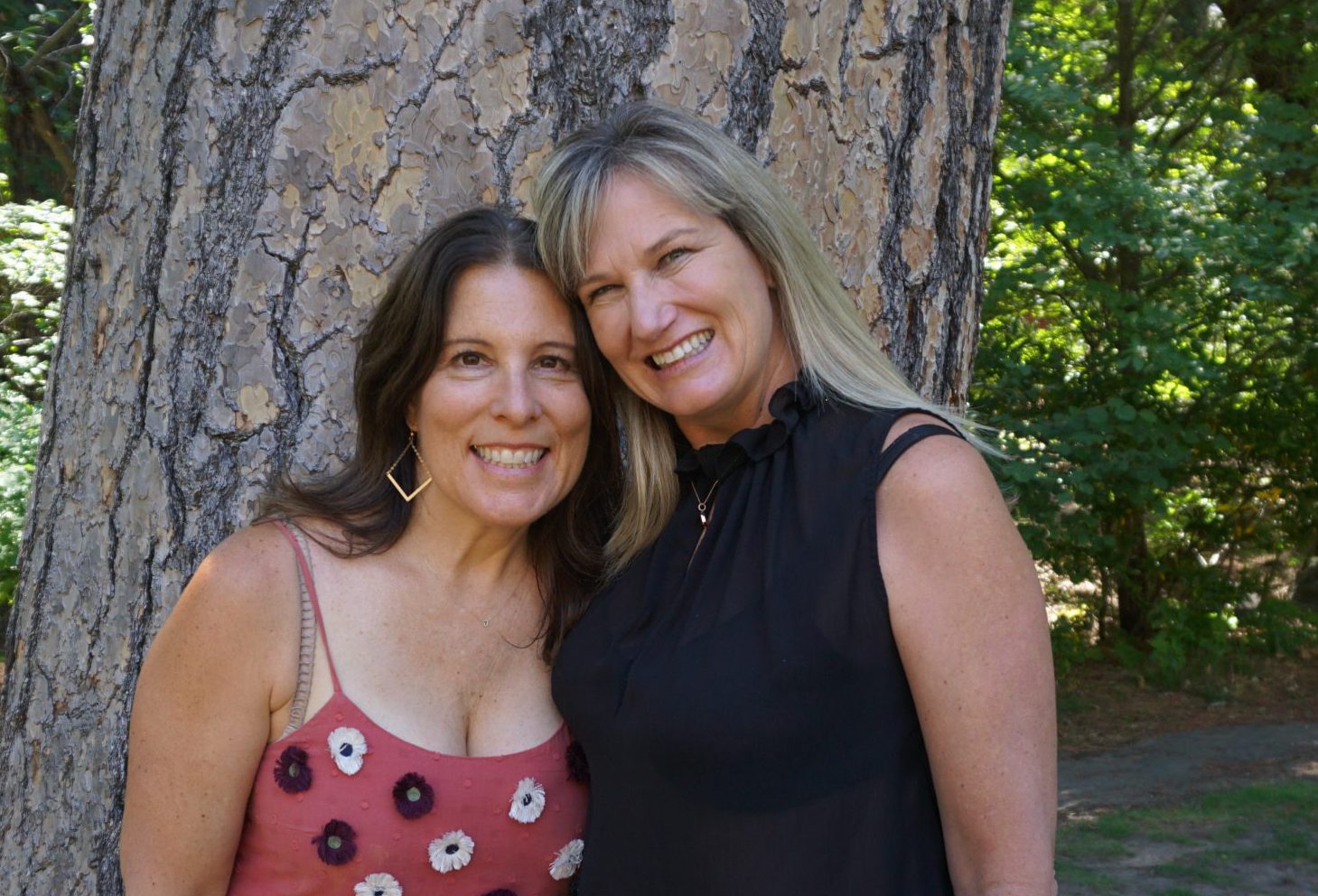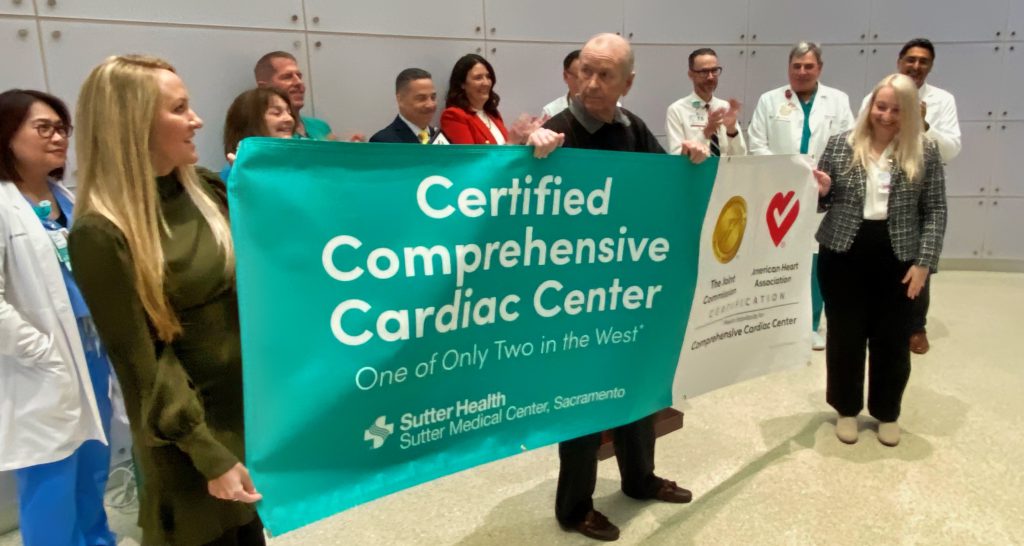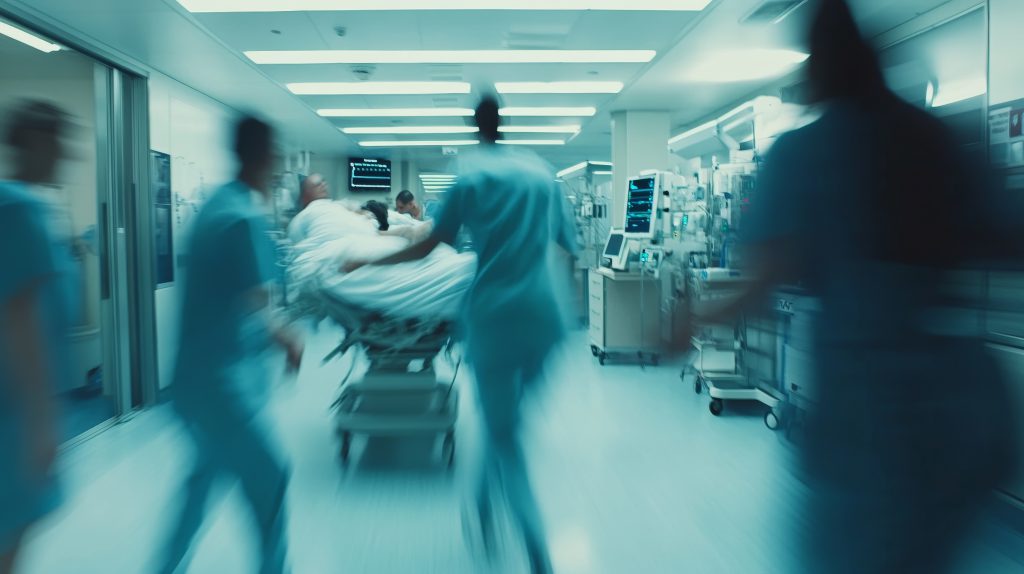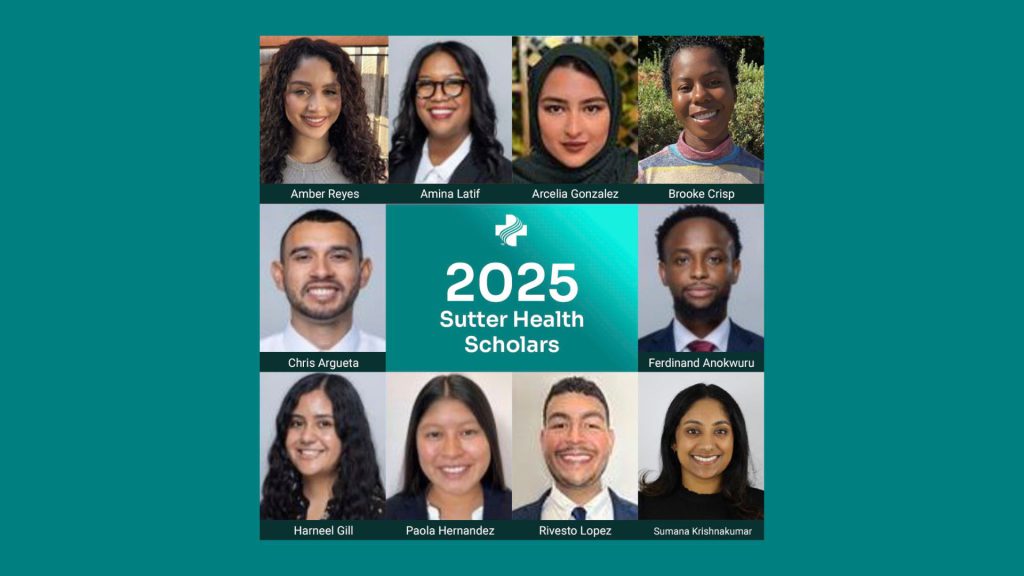Orinda residents Michelle Meyers and Maureen Matthews have shared a lot over the past four decades: studying late into the night as roommates at UC Davis, joining a sorority, marriages, children and challenging careers. One thing the best friends didn’t plan to share was breast cancer.
Michelle Meyers was thrilled when she gave birth to twin girls 10 years ago, but she wasn’t happy with the unsightly umbilical hernia her pregnancy caused. So, in 2020, she contacted Dr. Rita Kwan-Feinberg, a surgeon with Sutter East Bay Medical Foundation (SEBMF) who is also medical co-director of the Carol Ann Read Breast Health Center, and chief of staff at Alta Bates Summit Medical Center’s Berkeley campus.
Dr. Kwan-Feinberg reviewed Meyers’ medical history and noticed her family history of late onset breast cancer. The family history of breast cancer plus additional risk factors, including dense breast tissue, were red flags for Dr. Kwan-Feinberg who recommended a breast cancer risk assessment for Meyers at the SEBMF High Risk Breast Clinic.
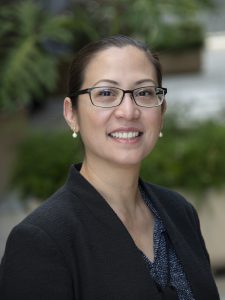
Dr. Rita Kwan-Feinberg, Sutter East Bay Medical Foundation
When Dr. Kwan-Feinberg calculated Meyer’s risk it turned out she had a 34% chance of developing breast cancer during the next five years. Risk is based on criteria established by the National Comprehensive Cancer Network which considers over 20% risk of breast cancer in the next five years to be high risk.
Dr. Kwan-Feinberg discussed strategies for reducing risk with Meyers including lifestyle changes like increasing exercise and adopting a plant-based diet. Dr. Kwan-Feinberg also recommended more frequent breast cancer screenings, alternating breast MRI with 3D mammograms (also known as tomosynthesis) every six months.
Meyers’ first breast MRI revealed a mass that turned out to be a Stage 1 lobular breast cancer.* Dr. Kwan-Feinberg treated the cancer by performing a lumpectomy, followed by radiation and Tamoxifen, a cancer risk reduction medication often prescribed for hormone receptor-positive breast cancer.
“I really am one of the luckiest women around and it’s all thanks to Dr. Kwan-Feinberg,” says Meyers. “She was so attuned to my high risk for breast cancer, she found it very early and removed it. I had just had a mammogram six months earlier and when they went back to doublecheck those scans, the cancer was undetectable! That sneaky lump might never have shown up in a mammogram and it would have likely grown for years before I knew it was there.”
Maureen Matthews saw what her best friend went through and knew her own extensive family history of breast cancer meant it would be a good idea to have own risk calculated like Meyers had. But she had had regular mammograms and even an ultrasound – which did not find cancer— and as a working mom of two teens who was going through a busy time, she delayed it. When Matthews did finally have her risk calculated, it turned out she was high risk as well. So, she proceeded with a breast MRI which revealed she had breast cancer –a Stage 0 ductal carcinoma in situ— and Dr. Kwan-Feinberg promptly removed it by lumpectomy.
“It’s so important for women who have a lot of breast cancer in their family to find out if they are high risk. I worry that many women don’t realize the questions they ask you in your doctor’s office are meant to flag if you’re at risk, and women, and sometimes their doctors, may not know the benefits of taking that next step and having their risk calculated,” says Matthews.
Meyers and Mathews feel fortunate their breast cancers were found at early, treatable, and highly survivable stages.
Related: What Every Woman Needs to Know About Breast Cancer Risks & Prevention
The American Cancer Society reports when breast cancer is found at an early stage, the 5-year survival rate is 99%. Early detection is the key and for most women aged 45 and over, a yearly mammogram may be sufficient, according to the ACS.
For women at higher-than-normal risk for breast cancer though, a more intense regimen may be in order. It’s for these women that Dr. Kwan-Feinberg and her colleague, SEBMF surgeon Dr. Benjamin Raber, established a High Risk Breast Clinic last spring.
At the High Risk Breast Clinic, Dr. Kwan-Feinberg says, “We use a risk calculator to weigh each woman’s personal factors and family history to determine her risk.”
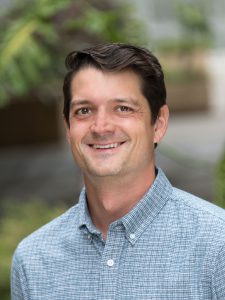
Dr. Benjamin Raber, Sutter East Bay Medical Foundation
Personal factors include variables like height and weight, age at first period, childbearing status, if you’ve taken hormone replacement therapy or oral contraceptives, have dense breast tissue or a history of a prior atypical but non-cancerous biopsy. Family history includes whether there is breast cancer or a genetic mutation such as BRCA in a woman’s family.
If a woman’s risk is determined to be high, then Dr. Kwan-Feinberg or Dr. Raber develop a tailored screening plan and offer suggestions as to how the patient can potentially lower her risk.
“The plan typically includes enhanced and increased screening including breast MRI** and monitoring, personalized lifestyle recommendations such as diet and nutrition guidance and weight-management, in-office full panel genetic testing if indicated, and more rarely, referral to an oncologist for potential chemoprevention to further lower the risk of cancer developing,” says Dr. Kwan-Feinberg.
Many women are referred to the clinic by their primary care physicians or gynecologists says Dr. Raber.
“The benefits of the High Risk Breast Clinic to our patients include receiving a clinical evaluation and screening every six months and very specific monitoring, says Dr. Raber. Our goal is to detect breast cancer early so treatment can be the least invasive and offers patients the best chance of survival.”
“Women who may be at higher risk for breast cancer should be evaluated at a High Risk Breast Clinic to see if they would benefit from being followed by one,” says Dr. Kwan-Feinberg. “If a woman is unsure about her status, I recommend she talk to her primary care physician or gynecologist.”
According to Dr. Raber, SEBMF’s High Risk Breast Clinic is one of only a few in the greater Bay Area and it is unusual in the East Bay because it is run by physicians.
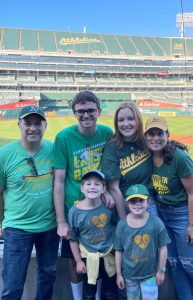
Breast Cancer Survivor Michelle Meyers and her family attend an Oakland A’s game.
“Our patients tell us how happy and relieved they are to have access to this type of advanced, personalized care in the East Bay,” says Dr. Kwan-Feinberg. “And that’s so important because we want to partner with them through their care journey. We hope they don’t progress to getting breast cancer, but if they do, we are here in the community to provide them with them with compassionate, high- quality care.”
On A Mission to Educate
Meyers is now cancer free and has begun a new career teaching 8th graders. Matthews recently recovered from her lumpectomy and has returned to her job in the medical services industry. The best friends are happy to share their stories as a way of encouraging other women to talk to their doctors about their own risk for breast cancer and whether they should have their risk for breast cancer calculated.
“Dr. Kwan-Feinberg is an amazing doctor who quite possibly saved my life – and for sure left me with an inspiring breast cancer story to tell, rather than a harrowing one,” says Meyers.
*The stage of a cancer describes the size of a tumor and how far it has spread from where it originated. Stage 1 cancer is confined to a small area and hasn’t spread to lymph nodes or other tissues.
**Dr. Kwan-Feinberg notes breast ultrasound is not typically used as a screening tool at the High Risk Breast Clinic for an asymptomatic woman, even if she has dense breast tissue. Dr. Kwan-Feinberg explains breast ultrasound is a complementary tool to further evaluate abnormalities seen on mammogram, MRI, or to further explore symptomatic patients who may be experiencing pain, nipple discharge or other breast changes.
Note: This content is not intended to be a substitute for professional medical advice, diagnosis or treatment. Always seek the advice of your physician or other qualified health provider with any questions you may have regarding a medical condition. Never disregard professional medical advice or delay in seeking it because of something you have read on this website.

